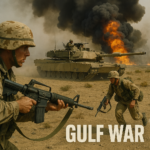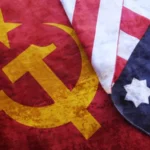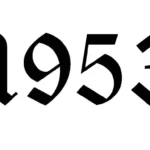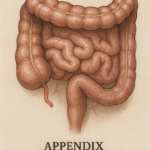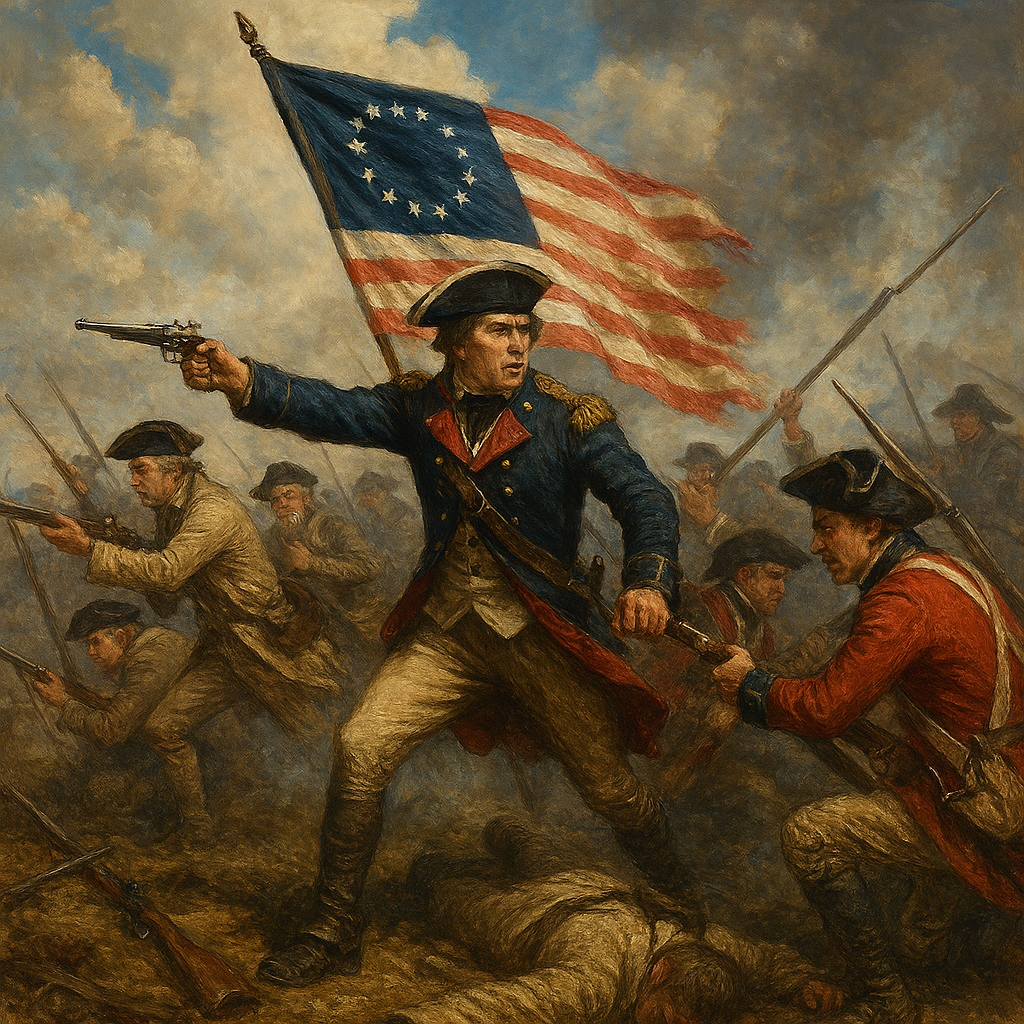
The American Revolution was far more than a clash of muskets and ideals—it was a transformative upheaval that reshaped the political landscape of the 18th century and laid the foundation for modern democracy. Spanning eight years of intense conflict from 1775 to 1783, this war involved not only battles and treaties but also groundbreaking innovations, espionage, and social change. In this blog, we delve into 25 fascinating and well-documented facts about the Revolution, each packed with numerical data, historical records, and measurable impact—from the cost of war and troop counts to the first submarine attack and forensic breakthroughs. Whether you’re a history enthusiast or a curious reader, these expanded entries will offer a deeper appreciation of the Revolution’s complexity and enduring legacy.
1. The American Revolution Lasted 8 Years
The American Revolutionary War officially began on April 19, 1775, with the Battles of Lexington and Concord, and concluded on September 3, 1783, with the signing of the Treaty of Paris. This eight-year conflict involved over 100 major engagements, ranging from small skirmishes to full-scale battles across the thirteen colonies. The war’s duration made it one of the longest sustained military efforts in early American history, requiring immense logistical coordination and resilience from the Continental Army and its allies.
2. The First Submarine Attack in History
In 1776, American inventor David Bushnell introduced the Turtle, a pioneering submersible vessel designed to attach explosives to British ships. Measuring just 7.5 feet long and operated by a single person, the Turtle attempted to sink the HMS Eagle anchored in New York Harbor. Although the mission failed due to technical difficulties, it marked the first recorded submarine attack in naval warfare, showcasing early American ingenuity in military technology.
3. George Washington’s Spy Alias Was Agent 711
During the Revolutionary War, General George Washington oversaw the Culper Spy Ring, a covert intelligence network operating primarily in New York. Within this ring, Washington was assigned the code name Agent 711, a numerical alias used in encrypted communications. The ring utilized advanced espionage techniques for the time, including invisible ink, dead drops, and coded messages, and remained undiscovered until the 1930s, underscoring its effectiveness and secrecy.
4. African American Participation Reached 30,000
An estimated 30,000 African Americans participated in the Revolutionary War, with 20,000 fighting for the British and 10,000 for the Continental Army. Many were motivated by promises of freedom, particularly after Lord Dunmore’s Proclamation in 1775, which offered emancipation to enslaved people who joined the British forces. Their contributions were significant, ranging from combat roles to labor and support services, and their involvement added complex layers to the war’s social and political dynamics.
5. Britain Spent £250 Million on the War
The British government invested approximately £250 million in the Revolutionary War effort, a staggering sum equivalent to £31 billion or $39 billion in today’s currency. This expenditure covered military supplies, troop deployments, naval operations, and payments to foreign mercenaries such as the Hessians. The financial strain contributed to Britain’s post-war debt crisis and influenced future colonial policies, including a more cautious approach to overseas conflicts.
6. The Siege of Yorktown Lasted 21 Days
The Siege of Yorktown, which took place from September 28 to October 19, 1781, was the final major battle of the Revolutionary War. Over the course of 21 days, a combined force of American and French troops surrounded 8,000 British soldiers under General Cornwallis, cutting off escape routes and bombarding their defenses. The British surrender at Yorktown effectively ended the war’s military phase and paved the way for peace negotiations in Paris.
7. Valley Forge Claimed 2,000 Lives
During the brutal winter of 1777–78, the Continental Army encamped at Valley Forge, Pennsylvania, where approximately 2,000 of the 12,000 soldiers died from exposure, disease, and malnutrition. The lack of adequate clothing, food, and shelter led to widespread suffering, with many soldiers resorting to wearing makeshift shoes made from cardboard and animal hides. Despite these hardships, the army emerged more disciplined and unified, thanks in part to training reforms introduced by Baron von Steuben.
8. Invisible Ink Was a Tactical Tool
Revolutionary spies employed invisible ink made from heat-sensitive or iron-based solutions to conceal messages within ordinary correspondence. These inks required heat or chemical reagents to reveal the hidden text, making them ideal for covert communication. The sophistication of these techniques was so advanced that modern historians have uncovered previously unknown messages by applying forensic methods to 18th-century documents.
9. Paul Revere’s Forensic Dentistry
After the Battle of Bunker Hill in June 1775, the body of Dr. Joseph Warren, a prominent patriot leader, was identified by Paul Revere using dental work he had performed. Revere had fitted Warren with a silver wire dental prosthesis, which he recognized during the exhumation. This event is considered the first documented case of forensic dental identification in American history, highlighting Revere’s multifaceted contributions beyond his famous midnight ride.
10. 30,000 Loyalists Emigrated
Following the war, approximately 60,000 Loyalists—colonists who remained loyal to the British Crown—fled the newly independent United States. Of these, around 30,000 resettled in Canada, particularly in Nova Scotia and Ontario, where they received land grants and support from the British government. This mass migration significantly altered the demographic and political landscape of British North America and laid the foundation for Canadian Loyalist communities.
11. Charleston’s Tea Protest Preceded Boston’s
On December 3, 1773, patriots in Charleston, South Carolina, seized three shipments of East India Company tea and stored them in warehouses to prevent its sale. This act of defiance occurred 13 days before the more famous Boston Tea Party, making it one of the earliest organized protests against British taxation. Although less dramatic than Boston’s destruction of tea, Charleston’s protest demonstrated widespread colonial resistance to the Tea Act.
12. France Secretly Funded America Before 1778
Before officially entering the war in 1778, France covertly supported the American cause through secret shipments of arms and supplies. French agent Pierre Beaumarchais facilitated the transfer of millions of livres worth of gunpowder, muskets, and artillery via dummy corporations. This clandestine aid was crucial in sustaining the Continental Army during its early struggles and laid the groundwork for the formal Franco-American alliance.
13. Native American Tribes Were Divided
The Revolutionary War caused deep divisions among Native American tribes, particularly within the Iroquois Confederacy. The Mohawk, Cayuga, Onondaga, and Seneca sided with the British, while the Oneida and Tuscarora supported the Americans, leading to intertribal warfare and long-term fragmentation. These alliances were often strategic, based on promises of land protection or autonomy, but ultimately resulted in significant loss of territory and sovereignty for many tribes.
14. Rum Was Used as Currency and Medicine
Rum played a vital role in the Revolutionary War, serving as both a form of currency and a medicinal resource for soldiers. Troops received rum rations to boost morale, and it was used to disinfect wounds, relieve pain, and treat various ailments. The reliance on rum reflected both the scarcity of medical supplies and the cultural importance of spirits in colonial America.
15. The Continental Army Peaked at 35,000 Troops
At its maximum strength, the Continental Army fielded approximately 35,000 soldiers, though this number fluctuated due to enlistment cycles, desertions, and supply shortages. Maintaining such a force required extensive recruitment efforts and support from state militias. Despite its relatively small size compared to British forces, the Continental Army achieved strategic victories through guerrilla tactics, foreign alliances, and strong leadership.
16. Over 100 Major Battles Were Fought
The Revolutionary War featured more than 100 major battles, including pivotal engagements such as Lexington and Concord, Bunker Hill, Saratoga, and Yorktown. These battles occurred across diverse terrains—from forests and mountains to urban centers—and involved complex coordination among American, British, French, and Native forces. The sheer number of engagements underscores the war’s intensity and the widespread nature of the conflict.
17. The Declaration of Independence Was Signed by 56 Men
On July 4, 1776, 56 delegates to the Second Continental Congress signed the Declaration of Independence, formally severing ties with Britain. These men, representing all thirteen colonies, risked execution for treason if the revolution failed. Their signatures became enduring symbols of American courage, and many of them faced personal loss, property confiscation, or exile during and after the war.
18. The Culper Spy Ring Used Dead Drops
The Culper Spy Ring, organized by Major Benjamin Tallmadge under Washington’s orders, utilized dead drops—hidden locations for exchanging messages without direct contact. These drops were often concealed in hollow logs, buried containers, or beneath floorboards, and were paired with coded letters and invisible ink. The ring’s operations were so effective that British intelligence never uncovered its full scope, making it one of the most successful espionage networks of the era.
19. The Treaty of Paris Was Signed on September 3, 1783
The Treaty of Paris, signed on September 3, 1783, officially ended the Revolutionary War and recognized the independence of the United States. Negotiated by American diplomats including John Adams, Benjamin Franklin, and John Jay, the treaty also established borders and addressed issues such as debts and prisoner exchanges. Its signing marked the beginning of a new era in international relations and American sovereignty.
20. Women Like Deborah Sampson Fought in Combat
Deborah Sampson, a Massachusetts woman, disguised herself as a man and enlisted in the Continental Army under the name Robert Shurtliff. She served for 18 months, participating in several battles and even treating her own wounds to avoid detection. Her story is one of the few documented cases of female combatants in the Revolutionary War and highlights the often-overlooked contributions of women to the war effort.
21. The Boston Massacre Occurred on March 5, 1770
The Boston Massacre took place on March 5, 1770, when British soldiers fired into a crowd of colonists, killing five men, including Crispus Attucks, a man of African and Native descent. The incident was widely publicized by patriot leaders like Paul Revere and Samuel Adams, who used it to galvanize anti-British sentiment. It became a pivotal moment in the buildup to revolution, symbolizing British tyranny and colonial resistance.
22. The Battle of Saratoga Turned the Tide
Fought in October 1777, the Battle of Saratoga resulted in the surrender of General John Burgoyne’s 5,800 British troops to American forces led by General Horatio Gates. This decisive victory convinced France to formally ally with the United States, providing military and financial support that proved crucial to the war’s outcome. Saratoga is often considered the turning point of the Revolutionary War due to its strategic and diplomatic consequences.
23. The Continental Congress First Met on September 9, 1774
The First Continental Congress convened in Philadelphia on September 9, 1774, bringing together delegates from twelve of the thirteen colonies to coordinate resistance against British policies. The Congress issued the Declaration of Rights and Grievances and organized a boycott of British goods, laying the groundwork for unified colonial action. This meeting marked the beginning of formal political collaboration among the colonies.
24. The Revolution Inspired Global Movements
The success of the American Revolution had a profound impact on global politics, inspiring the French Revolution in 1789 and independence movements throughout Latin America, Europe, and beyond. The principles of liberty, self-governance, and republicanism articulated during the revolution resonated with oppressed peoples worldwide. The American example demonstrated that colonial powers could be successfully challenged, reshaping the geopolitical landscape of the 18th and 19th centuries.
25. Black Powder Created Battlefield Fog
The widespread use of black powder in muskets and cannons during the Revolutionary War produced thick clouds of smoke, often obscuring visibility on the battlefield. This “fog of war” led to confusion, miscommunication, and instances of friendly fire, complicating tactical maneuvers. The phenomenon was so pronounced that commanders had to rely on sound, intuition, and pre-arranged signals to direct troops during engagements.
FAQs about The American Revolution:
1. What year did the American Revolutionary War begin?
The American Revolutionary War began in 1775, specifically on April 19, with the Battles of Lexington and Concord in Massachusetts. These skirmishes marked the first armed conflict between colonial militias and British troops. The war continued until 1783, culminating in the signing of the Treaty of Paris.
2. What event marked the beginning of the American Revolutionary War?
The war officially began with the Battles of Lexington and Concord on April 19, 1775. These confrontations occurred after British troops attempted to seize colonial weapons and arrest patriot leaders. The resistance by the Minutemen sparked a full-scale rebellion across the colonies.
3. Who was the commander-in-chief of the Continental Army?
George Washington was appointed commander-in-chief of the Continental Army by the Second Continental Congress in June 1775. His leadership, strategic acumen, and ability to maintain morale were instrumental in sustaining the revolutionary cause. Washington later became the first President of the United States in 1789.
4. Which document declared American independence from Britain?
The Declaration of Independence, adopted on July 4, 1776, formally declared the thirteen colonies’ separation from British rule. Drafted primarily by Thomas Jefferson, it articulated Enlightenment ideals such as liberty, equality, and the right to self-governance. The document was signed by 56 delegates of the Second Continental Congress.
5. What battle is considered the turning point of the war?
The Battle of Saratoga, fought in October 1777, is widely regarded as the turning point of the American Revolutionary War. The American victory led to the surrender of British General John Burgoyne and convinced France to enter the war as an ally to the United States. This alliance provided crucial military and financial support.
6. Who were the Minutemen?
The Minutemen were colonial militia members trained to respond quickly to threats, often within a minute’s notice—hence their name. They played a vital role in early battles such as Lexington and Concord. Their readiness and local knowledge made them effective in guerrilla-style engagements against British forces.
7. Which European country supported the American colonies?
France provided essential military and financial support to the American colonies, officially entering the war in 1778 after the American victory at Saratoga. French assistance included troops, naval power, and supplies, with figures like the Marquis de Lafayette playing key roles. This alliance was decisive in securing American independence.
8. Who wrote “Common Sense”?
Thomas Paine authored the influential pamphlet “Common Sense” in January 1776, which argued for American independence in clear, persuasive language. It sold over 500,000 copies and helped shift public opinion toward revolution. Paine’s work remains one of the most impactful political writings in American history.
9. Who made the famous midnight ride?
Paul Revere is best known for his midnight ride on April 18, 1775, during which he warned colonial militias of approaching British troops. Though other riders like William Dawes and Samuel Prescott also participated, Revere’s ride became iconic through later retellings and poems. His actions helped mobilize the Minutemen for the battles at Lexington and Concord.
10. Who crossed the Delaware River on Christmas night in 1776?
George Washington famously led his troops across the Delaware River on December 25–26, 1776, in a surprise attack against Hessian mercenaries in Trenton, New Jersey. This bold maneuver resulted in a crucial American victory and boosted morale during a bleak phase of the war.
11. Which British general surrendered at Saratoga?
General John Burgoyne surrendered to American forces at the Battle of Saratoga in October 1777. His defeat marked a major setback for British strategy and directly influenced France’s decision to ally with the American revolutionaries. The surrender involved over 5,800 British troops.
12. What was the final major battle of the war?
The Battle of Yorktown, fought from September 28 to October 19, 1781, was the last major battle of the Revolutionary War. American and French forces besieged British General Cornwallis, who surrendered with 8,000 troops, effectively ending the war’s military phase. The Treaty of Paris followed two years later.
13. What roles did women play during the war?
Women served as nurses, caretakers, spies, and support personnel, often managing farms and businesses while men fought. Some, like Deborah Sampson, disguised themselves as men to fight in combat. Others, such as Molly Pitcher, assisted on battlefields by delivering water and tending to the wounded.
14. Which treaty ended the war?
The Treaty of Paris, signed on September 3, 1783, officially ended the American Revolutionary War. It recognized the independence of the United States and established borders between the U.S. and British North America. The treaty also addressed issues like debts and prisoner exchanges.
15. What British tax policies led to protests?
Several British tax acts sparked colonial outrage, including the Stamp Act (1765), Townshend Acts (1767), and Tea Act (1773). These laws imposed taxes on paper goods, imports, and tea without colonial representation in Parliament. The slogan “No taxation without representation” became a rallying cry for resistance.
16. Who became the first U.S. President after the war?
George Washington was unanimously elected as the first President of the United States in 1789, serving two terms until 1797. His leadership during the war and his commitment to republican principles made him a unifying figure in the new nation. He declined a third term, setting a precedent for peaceful transitions of power.
17. Who said “Give me liberty, or give me death”?
Patrick Henry, a Virginia statesman, delivered the famous line “Give me liberty, or give me death!” during a speech in March 1775. His passionate appeal helped galvanize support for armed resistance against British rule. The phrase remains one of the most iconic expressions of revolutionary fervor.
